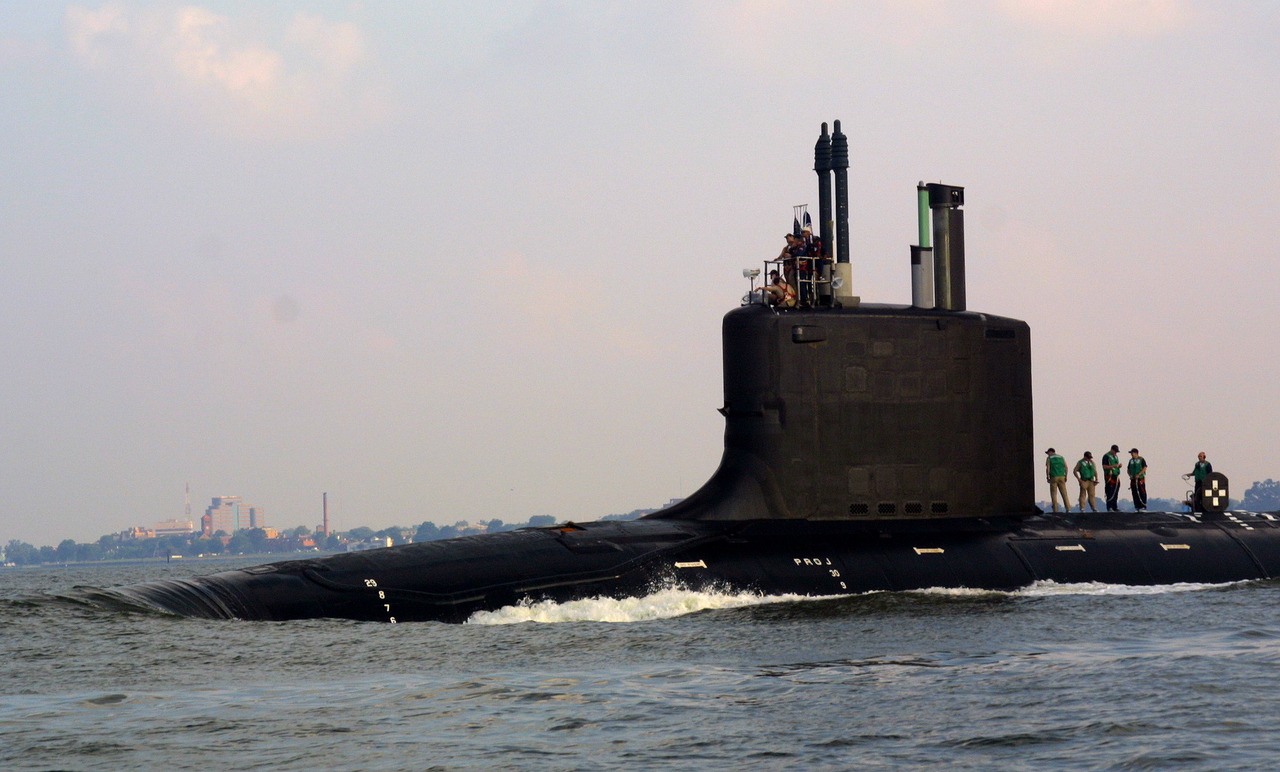
U.S. Navy Receives Its 24th Virginia-class Submarine
The delivery of SSN 797 is a major milestone for the U.S. Navy and American shipbuilders.
In the final days of 2024, General Dynamics handed over the twenty-fourth Virginia-class submarine to the U.S. Navy. The formidable boats that make up this class are heralded as the most capable fast-attack nuclear-powered vessels in service across the globe. For nearly a quarter century, the Virginia-class submarines have served the Navy diligently, excelling in stealth, warfare, and intelligence gathering. The delivery of SSN 797 is a major milestone for both General Dynamics Electric Boat and HII-Newport News Shipbuilding, which have been tasked with producing the Navy’s future Virginia vessels.
Introducing the Virginia-class
The Virginia-class design dates back to the height of the Cold War, when the Navy first conceptualized a new submarine in a program designated the “Centurion Study.” While the Navy’s Seawolf-class ships had already entered the production pipeline, the Navy desired a more cost-effective alternative since these vessels cost nearly $2.8 billion each to build. In order to fulfill the Navy’s design needs and budget, manufacturers GDEB and HII used commercial-off-the-shelf components (COTS) to produce the Virginia submarines. Notably, the Virginia submarines represented the first American warships created with 3D visualization technology. The manufacturers also incorporated COTS in their computers and data networks. In total, these submarines displace nearly 8,000 tons with a hull length of 377 ft and a diameter of 34 ft. Nuclear-powered, these vessels can drive to more than 800 feet and reach a top speed of 25 knots in the water.
So far, twenty-one Virginia-class submarines have been commissioned with the Navy. The first boats in the Virginia-class to enter service were the Virginia (SSN 774) and Texas (SSN 775). Subsequent vessels in the series include Hawaii (SSN 776), New Hampshire (SSN 778), Missouri (SSN 780), Mississippi (SSN 782) and John Warner (SSN 785) being built by Electric Boat, with North Carolina (SSN 777), New Mexico (SSN 779), California (SSN 781), Minnesota (SSN 783) and North Dakota (SSN 784). In June 2008, the Navy christened its first-ever Block II submarine: USS New Hampshire.
What makes the Block IVs stand out?
The vast majority of the Virginia ships are from the earlier Blocks I-III classes and only three Block IV submarines are in service today. Each Virginia submarine is impressive; however, the latest variant is truly a game changer. With the addition of the Virginia Payload Module (VPM), Block IVs are designed to interact with the seafloor and can store more weapons than earlier variants. As detailed by The Drive, the new VPM which will be fitted to the upcoming Block V Virginia-class ships features a “similar hull plug that stretches 84 feet that would be adapted to the seabed warfare role instead of hauling around cruise, hypersonic, and other missiles.”
While the Block IVs and the rest of the Virginia-class submarines represent a core pillar of the Navy’s maritime security strategy, budgetary constraints and other delays have hindered the timely introduction of newer ships. In fact, experts estimate that the class is 41 months behind, with expectations to catch up by 2028. Considering the threat climate across the globe, the imminent introduction of these formidable submarines is paramount.
About the Author: Maya Carlin
Maya Carlin, National Security Writer with The National Interest, is an analyst with the Center for Security Policy and a former Anna Sobol Levy Fellow at IDC Herzliya in Israel. She has by-lines in many publications, including The National Interest, Jerusalem Post, and Times of Israel. You can follow her on Twitter: @MayaCarlin. Carlin has over 1,000 articles published over the last several years on various defense issues.
Image: U.S. Navy photo by Journalist 2nd Class Christina M. Shaw, Public domain